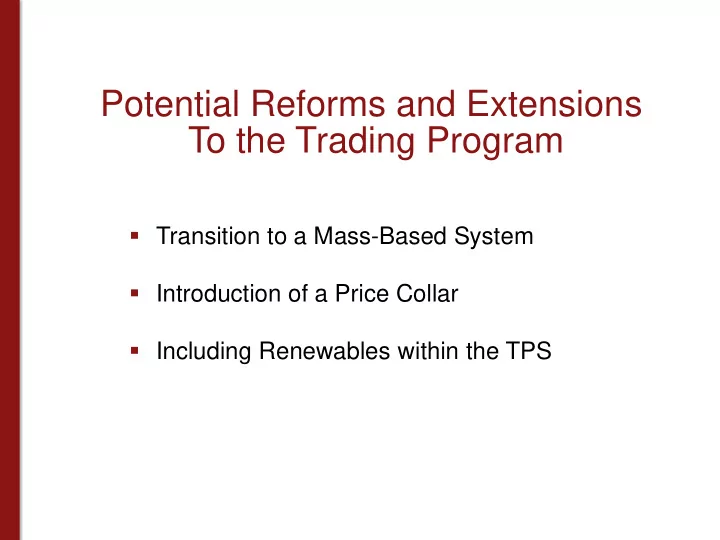

Potential Reforms and Extensions To the Trading Program Transition to a Mass-Based System Introduction of a Price Collar Including Renewables within the TPS
1. Transition to a Mass-Based System (Cap & Trade) Attractions: Lower aggregate cost Figure 3: TPS and C&T Costs under Varying Policy Stringencies Private Cost (million RMB) Emissions Reductions (million tCO 2 )
1. Transition to a Mass-Based System (Cap & Trade) Attractions: Lower aggregate cost Drawbacks: Higher output prices more leakage Stringency no longer adjusts with business cycle The transition would imply higher output prices, which would tend to increase the share of the regulatory burden borne by consumers
2. Introduction of a Price Collar Attractions: Reduces allowance-price uncertainty “Unacceptably” low or high prices can be avoided Drawback: Introduces new source of emissions-quantity uncertainty Can be implemented via auctioning of allowances Some allowances issued free based on benchmarks Some sold at auction (auction is marginal supply source) Compliance requires ( e – a 1 – a 2 ) / q < β where e = emissions (net of secondary market allowance purchases) a 1 = allowances received free; a 2 = allowances purchased at auction q = output; β = benchmark
3. Include Renewables within the TPS? Attraction: Gives renewables a further boost (their baseline ( e/q )s will likely be below their benchmarks) Qualification: Overall efficiency impact depends on efficiency of pre-existing renewables regulations Other important considerations?
Recommend
More recommend